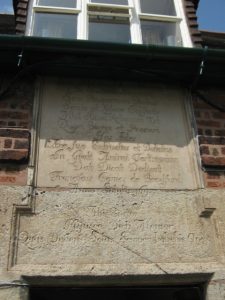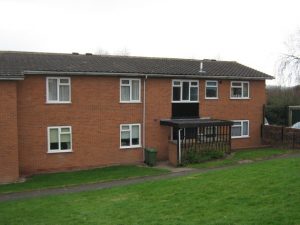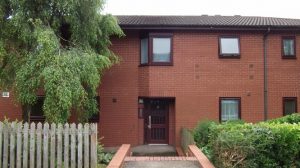All housing organisations including almshouses will have insurance for buildings, offices, loss of rent and other risks but often the sum insured is not reviewed and the insurance cover continues from year to year with perhaps a small allowance made for inflation. Whilst this is not given much thought by some, it is important to review the insured figure for a number of reasons:
- If the worst were to happen and the building burnt down, the sum insured could turn out to be inadequate to cover the cost of rebuilding the property. If this is the case the insurers will not pay the full costs required to reinstate the building. They are likely to apply an average whereby the amount of the claim is reduced proportionally to the value of underinsurance.
- Conversely the sum insured could be higher than that actually required meaning that the premium paid could be greater than necessary, this could also serve to unnecessarily increase residents’ contributions or service charges.
- Recent trends in building prices have shown drastic fluctuations and, depending on when the insured level was last set, the rebuilding figure could have significantly changed.
Who should set the level insured?
The person responsible for insuring the building will vary but will usually be the property owner (or managing agents where appointed), they may also be responsible for setting an appropriate level of cover. Insurance brokers will sometimes assist with the level of insurance but this is not usually the case.
Many domestic insurance policies aimed at the private householder market now offer unlimited rebuild costs up to a defined limit such as £1,000,000. This is rarely the case with policies taken out by housing organisations, which have set amounts for rebuilding included in the Schedule of Insurance.
Why does the figure need to be reviewed?
The BCIS (Building Cost Information Service) part of the Royal Institution of Chartered Surveyors, publishes regular indices of tender prices for a large range of building types. These show that tenders for new building work rose fairly consistently from the mid 1990’s until the 4th quarter of 2007, following this it fell by 17% up to the 1st quarter of 2010 and then increased again peaking in the 1st quarter of 2015. So if the rebuilding sum was set at the time of any of these extremes it could now be wildly out of date. For example between the 1st quarter of 2010 and the 1st quarter of 2015 building costs increased by 33%!
Who should do the assessment?
The Royal Institution of Chartered Surveyors suggests using the name “Insurance Reinstatement Cost Assessment” to avoid confusion with other types of valuation or survey and defines it as an ‘assessment of building reinstatement cost for insurance purposes’. The assessment is usually carried out by a Chartered Building Surveyor either on an elemental basis or by application of a rate per square metre, typically using BCIS rates.
On particularly complex historic buildings a more detailed approach may be needed and in extreme cases production of approximate quantities by a Quantity Surveyor may be the only viable approach, involvement of an Accredited Conservationist may also be useful.
The Assessment also includes the costs of demolition, professional fees, and Local Authority charges for Planning and Building Regulations. There will be a fee to be paid to the surveyor, but the landlord can recover this cost as part of normal service charges.
 Stonework and other original features add to the cost of rebuilding
Stonework and other original features add to the cost of rebuilding
What should the building be insured for?
The building must be insured to cover the full cost of demolition and rebuilding together with any other allowances required by the lease terms. Insurance policies and leases should checked to establish what is included in the cover. This may cover alternative accommodation for the tenants, the way in which VAT is covered also varies and these matters should be clarified with the insurance company or broker.
Many almshouses are listed or in conservation areas, this adds additional costs to rebuilding, as do original features such as stonework and leaded lights all of which must be taken into account in the assessment.
The RCA makes no allowance for anything other than the rebuilding cost.
An example of the application of a Reinstatement Cost Assessment
Assessments were carried out on two blocks of flats owned by a Midlands Housing Association. The first block was built in the 1970s and the second in the 1980s. Both were insured for figures set some time ago, probably based on the cost of construction at the time they were built. Assessments were made using costs per square metre based on BCIS rates and including allowances for demolition, rebuilding, landscaping, professional fees and local authority charges.
 Block 1
Block 1
Block 1 was found to be underinsured by £300,000 – a considerable sum and one which would be difficult to cover from the association’s reserves should a total loss have occurred. By way of a contrast Block 2 was found to be over insured by a figure of £220,000. In this case the overall impact on the organisation was minimal as the cost saving on the Block 2 went some way to cover the additional costs of the premium on Block 1, however, the assessment was invaluable as it highlighted the potential shortfall which was a considerable hidden risk to the association.
Conclusion
The Royal Institution of Chartered Surveyors recommends that an annual adjustment is made to take into account inflation (important to remember that this is building cost inflation and not general prices inflation) and a full review and reassessment every three years or when any extensions or significant alterations are made.
 Block 2
Block 2
There are a number of Building Surveyors experienced in this type of work on the Almshouse Association Panel of Consultants.
Tim Richardson MCIAT MCIOB MSAI MRICS
Chartered Architectural Technologist, Chartered Construction Manager, Chartered Building Surveyor, CIAT-Accredited Conservationist and Member of the Association’s Panel of Consultants.
Contact details:51 Derwent Road, Stirchley, Birmingham B30 2UY
Email: tim@timothyrichardson.co.uk
Tel: 0121 471 1478 Mobile: 07500 185203